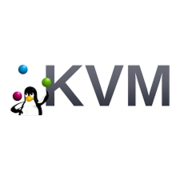Server Virtualization Software
Server Virtualization Software Overview
Top Rated Server Virtualization Products

These products won a Top Rated award for having excellent customer satisfaction ratings. The list is based purely on reviews; there is no paid placement, and analyst opinions do not influence the rankings. Read more about the Top Rated criteria.
Server Virtualization Software TrustMap
TrustMaps are two-dimensional charts that compare products based on trScore and research frequency by prospective buyers. Products must have 10 or more ratings to appear on this TrustMap.
Server Virtualization Products
(1-25 of 25) Sorted by Most Reviews

Scale Computing offers edge computing, virtualization, and hyperconverged solutions for customers around the globe. Scale Computing HC3® software promises to eliminate traditional virtualization software, disaster recovery software, servers, and shared storage, replacing these with…
Key Features
- Live virtual machine migration (90)97%9.7
- Management console (99)87%8.7
- Hypervisor-level security (89)86%8.6

Nutanix AOS
Nutanix in San Jose, California offers their software-defined Enterprise Cloud as a hyper-converged infrastructure solution. The Nutanix Enterprise Cloud solution combines the Nutanix Acropolis virtualization solution, Nutanix AHV hypervisor (though Acropolis works with other hypervisors)…

Oracle Linux
Oracle Linux, which is 100% application binary compatible with Red Hat Enterprise Linux, is free to download, use, and share. There is no license cost, no need for a contract, and no usage audits. Cost-effective, 24/7 enterprise-grade support is available for business critical…
Key Features
- Hypervisor-level security (52)83%8.3
- Management console (56)80%8.0
- Live virtual machine migration (53)77%7.7
Key Features
- Live virtual machine migration (51)94%9.4
- Management console (53)92%9.2
- Virtual machine automated provisioning (49)86%8.6

Oracle VM VirtualBox
Oracle VM VIrtualBox is Oracle's cross-platform virtualization offering, acquired with Sun Microsystems in early 2010. The software was originally developed by Innotek GmbH.
Key Features
- Live virtual machine backup (39)81%8.1
- Management console (47)74%7.4
- Virtual machine automated provisioning (37)67%6.7

VMware Workstation Pro is virtualization software which allows running multiple x86-based operating systems on one PC.
Key Features
- Management console (17)92%9.2
- Live virtual machine migration (16)90%9.0
- Live virtual machine backup (16)89%8.9

IBM Cloud for VMware Solutions is designed to make cloud adoption fast and easy, allowing the user to optimize the value of existing on-premises infrastructure, while leveraging the same tools, technologies and skills in the cloud. Gain rapid scalability, deployment in 35+ global…
Key Features
- Hypervisor-level security (20)84%8.4
- Virtual machine automated provisioning (20)81%8.1
- Management console (19)77%7.7

Citrix Hypervisor (formerly XenServer) is a virtualization management platform optimized for application, desktop and server virtualization infrastructures.
Key Features
- Live virtual machine migration (11)91%9.1
- Management console (11)87%8.7
- Virtual machine automated provisioning (10)82%8.2
Learn More About Server Virtualization Software
What is Server Virtualization Software?
Server Virtualization Software Features & Capabilities
- Type 1 or type 2 hypervisor
- Run multiple virtual machines using different OS on same server
- Automated virtual machine provisioning
- Manage remote physical locations, branch locations with rapid provisioning
- Server health monitoring, performance bottleneck, workload rebalancing
- Centrally control and optimize virtual machine environment
- Patch or backup virtual machines without interrupting service
- Migrate live virtual machines between hosts during scheduled maintenance
- Hypervisor-level security, including antivirus and anti-malware
- Secure apps and infrastructure with guest operating system lockdown
- Auditable activity, performance log
Types of Virtualization Software
Virtualization software can be distinguished by the type of hypervisor they utilize. Hypervisors are an important part of virtualization software as they allow a host machine to manage multiple virtual machines.Type 1 hypervisors are installed directly onto the server. As a result, type 1 hypervisors provide high efficiency and stability. Server virtualization software that uses a type 1 hypervisor is ideal for larger operations that use many server instances.
Type 2 hypervisors are installed on top of a server’s operating system. Virtualization software using a type 2 hypervisor is easier to install and manage for smaller projects but can become more difficult to manage as projects grow.











